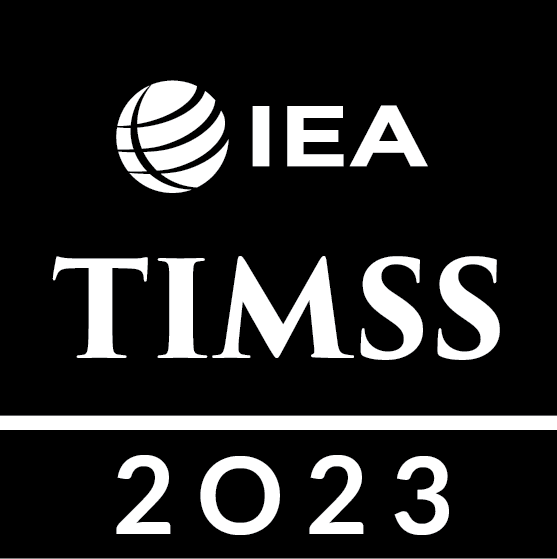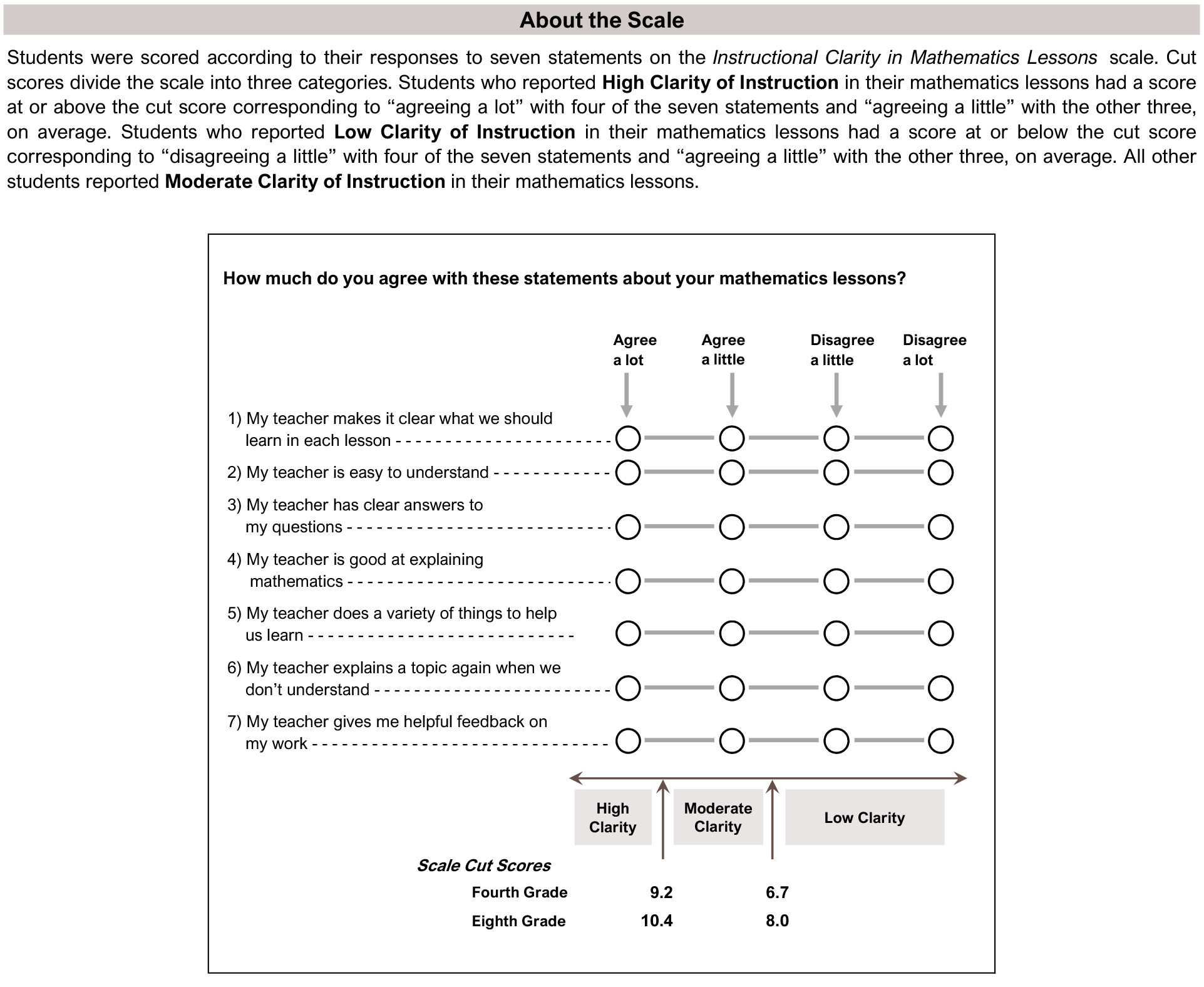Student Bullying
Classroom Environment
Instructional Clarity in Mathematics Lessons
Students who report experiencing high-clarity instruction tend to have higher average mathematics achievement internationally than students who experience instruction of lower clarity. The TIMSS 2023 Instructional Clarity in Mathematics Lessons scale (Exhibit 5.2.1) includes items that asked students to indicate their agreement with different statements about their teachers’ provision of mathematics instruction, such as answering questions clearly or giving helpful feedback. Based on these responses, students were classified as experiencing “high clarity of instruction,” “moderate clarity of instruction,” or “low clarity of instruction.”
On average, 69 percent of fourth-grade students internationally reported “high clarity” of instruction during their mathematics lessons, 26 percent reported “moderate clarity,” and just 5 percent reported their lessons as having “low clarity.” On average internationally, student-reported higher instructional clarity was associated with higher average achievement (Exhibit 5.2.2). There was a 41-point difference in average mathematics achievement between fourth-grade students who experienced “high clarity” of instruction and the small percentage of students who experienced “low clarity” of instruction (513 vs. 472) while students who experienced “moderate clarity” of instruction had an average achievement in between (492).
A little less than half of eighth-grade students reported that their mathematics instruction had “high clarity” (48%). Thirty-six percent reported “moderate clarity” and 15 percent reported “low clarity.” Internationally, there was a positive relationship between self-reports of instructional clarity and average mathematics achievement (Exhibit 5.2.3). There was a 29-point difference in average mathematics achievement between eighth-grade students who experienced “high clarity” of instruction and those who experienced “low clarity” of instruction (487 vs. 458). Students in the eighth grade who experienced “moderate clarity” of instruction had an average achievement of 470.
Read More
Instructional Clarity in Mathematics Lessons
Never or Almost Never
About Monthly
About Weekly
This TIMSS context questionnaire scale was established in 2023 based on the combined response distribution of countries that participated in TIMSS 2023. To provide a point of reference for country comparisons, the scale centerpoint of 10 was located at the mean of the combined distribution. The units of the scale were chosen so that 2 scale score points corresponded to the standard deviation of the distribution.
( ) Standard errors appear in parentheses. Because of rounding some results may appear inconsistent.
An “r” indicates data are available for at least 70% but less than 85% of the students.
A tilde (~) indicates insufficient data to report result.
Scroll Up

